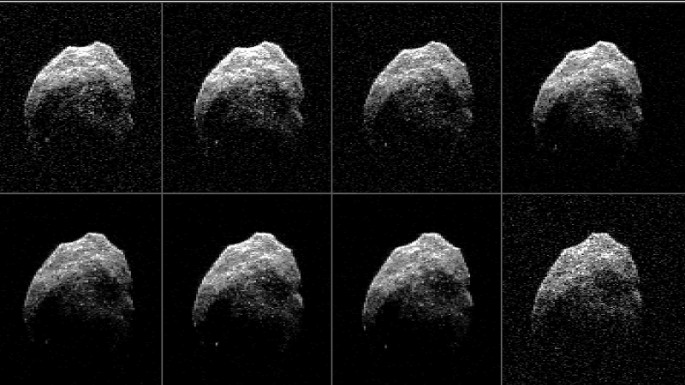On October 31, 2015, a "spooky" asteroid came to visit Earth measuring 2,000 feet wide where it safely zipped by the planet at a distance of 1.3 times from the Earth to the moon.
Known as 2015 TB145, this near Earth object was apparently just discovered three weeks ago and while it did not present any signs of danger of a possible impact, its size and high velocity at 78,000 miles per hour makes for a deadly asteroid.
While this "spooky" asteroid passed by the neighborhood, NASA scientists took this opportunity to learn more about this asteroid by bouncing off radar waves to generate an image of 2015 TB145 and capturing more features and details of the asteroid since it is travelling in high speeds and possesses a dark color.
According to Lance Benner from NASA's Jet Propulsion Laboratory, the radar images of asteroid 2015 TB145 reveal areas of its surface that was not previously seen before such as concavities and bright spots that could indicate boulders and other complex surface features like ridges.
The images were created from data obtained from radar observations by the Deep Space Network's DSS-14 antenna in California where the radar waves reflected off the approaching asteroid which were then collected by the National Radio Astronomy Observatory's Green Bank Telescope in West Virginia.
Prior to this new data, images of the asteroid were taken from National Science Foundation's Arecibo Observatory in Puerto Rico revealed a different view, showing 2015 TB145 as a human skull.
Radar images are not considered as "true" photos of the asteroid but radar data can show the general shape, size and rotation including surface texture differences and features as well. Scientists also suggest that this asteroid could be a dead comet, exposing a dead nucleus.
According to James Richardson who is a USRA Scientist from the Planetary Radar Group, the bright and dark features of the asteroid reveal surface irregularities where the center dark feature could be a large circle shaped depression and even possibly an impact crater.
For its next visit, asteroid 2015 TB145 will pass by Earth again in September 2018 at a distance of 24 million miles.



























